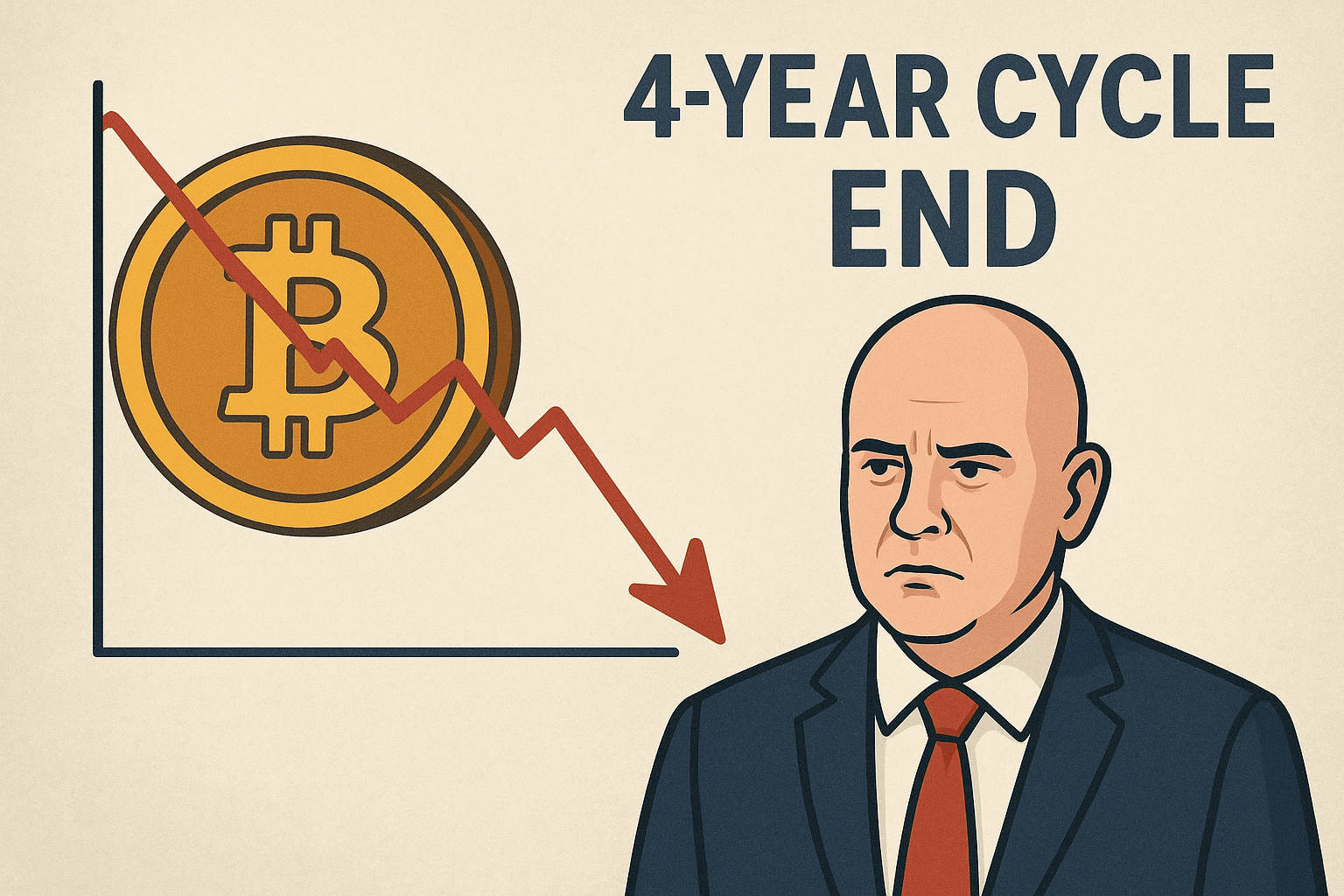Charles Edwards, founder of Capriole, believes that Bitcoin's 4-year cycle model – associated with halving events – has officially ended. However, the reason is not that the market has stabilized, but because the 'motivation' that previously caused 80-90% declines has disappeared, destroyed by Bitcoin's very design of scarcity.

Bitcoin – The 'Hardest' Asset in History
In Capriole Update #66 (August 15, 2025), Edwards emphasizes: after the halving in April 2024, the growth rate of Bitcoin supply is only 0.8% per year, less than half of gold's 1.5-3% rate. This makes Bitcoin the scarcest asset humanity has ever known, with new supply issued almost being just 'rounding errors' compared to total demand.
As a result: deep declines due to selling pressure from miners in previous cycles are increasingly becoming 'artifacts of the past.'
The Cycle Still Exists, But the Dynamics Have Changed
Edwards does not deny Bitcoin's cycle, but he asserts that the reasons have changed. Now, volatility is determined by:
Macroeconomic liquidity
Investor reflex behavior
Extreme valuation on-chain
Excitement in the derivatives market
Importantly: the halving schedule is no longer a 'guiding light' for turning points. Instead, investors need to focus on global liquidity and institutional cash flow.
Liquidity – A Deciding Factor for Trends
According to Edwards, the 'Net Liquidity' index – global money supply growth minus debt costs (10-year US Treasury yield) – is the core measure:
All bear markets of Bitcoin in history have occurred when this index is negative.
In contrast, major bull markets appear when net liquidity is positive.
Currently, he assesses a positive liquidity environment, expecting the Fed to cut interest rates 3 times in the second half of 2025.
On-chain Data – No 'Bubble' Yet
Indicators like MVRV, NVT, Energy Value often signal the peak cycle zone when they turn red. However, by mid-2025, they are still far from extreme zones. According to Edwards, Bitcoin is growing steadily, much more sustainably than in previous cycles.
However, the synthetic derivatives index 'Heater' has begun to heat up, approaching historical highs. This signals a need for short-term caution, although it is not enough to form a major peak.
Strength from Institutional Cash Flow
A dominant factor in the 2025-2026 period is the absorption of supply by institutions. Currently, more than 150 listed companies and ETFs are buying Bitcoin at a rate 5 times greater than the daily new mined supply.
Historically, whenever demand exceeds supply at this level, Bitcoin's price has averaged a 135% increase in the following months. However, Edwards warns: institutional demand can quickly turn into supply when they change their strategy.
Thus, Capriole has built an early warning system that monitors:
Purchase/sale ratio of treasury companies
CVD treasury (Cumulative Volume Delta)
Net purchases on Coinbase
The number of companies ramping up sales
Long-term Risk: Quantum Computers
Edwards dedicates the end to discussing the most significant potential threat: quantum computing (QC). He believes that in the next 5-10 years, QC could grow faster than Bitcoin by up to 50% per year, becoming a market over 2 trillion USD.
While it does not pose an immediate threat in this cycle, quantum computing (QC) could break Bitcoin's security code in the next 3-6 years if no preventive measures are taken. With rapid development (China spending 5 times more than the US, announcing a QC machine a million times more powerful than Google), Bitcoin needs to prepare for quantum-resistant upgrades before it’s too late.
Edwards estimates that transitioning the entire network to QC-safe standards could take 3-6 months for processing transactions, due to blockchain limitations. He calls for the community to urgently act through BIPs (Bitcoin Improvement Proposals) related to QC.
Conclusion
Bitcoin's 4-year cycle linked to halving has ended.
The two most important factors in the new era: Net liquidity and institutional cash flow.
The biggest risk: Bitcoin fund management companies – they can amplify both uptrends and downtrends.
Long-term threat: quantum computing – if unprepared, it will be the 'grim reaper' in the next cycle.
According to Edwards, if institutional capital flow remains strong, Bitcoin still has a significant price appreciation phase ahead. But vigilance is essential: instead of believing in the 'outdated 4-year cycle,' investors need to learn how to read the new rhythm of the market.
